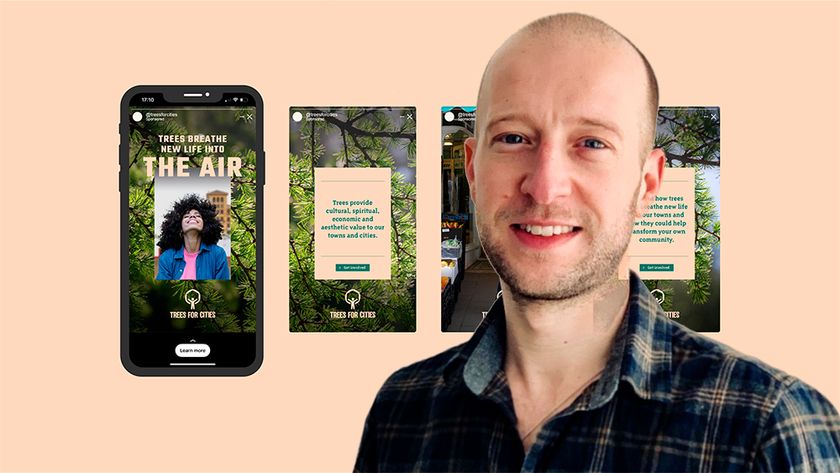How to project your work onto the global design stage
Boss your brand: The creative’s guide to self-promotion.

You might have a strong skill set and a reputation for delivering outstanding creative, but if you’re looking to win more work, grow your client list or move into new markets, you need to master the fine art of self-promotion.
Whether you’re a freelance designer or illustrator, or the head of a creative studio, getting your work in front of the right people is a skill in itself. So how can you elevate your design status and catch the attention of the people who count?
Here, we share our top tips for savvy self-promotion. Read on to find out how to project your work onto the global design stage…
01. Pimp your online portfolio
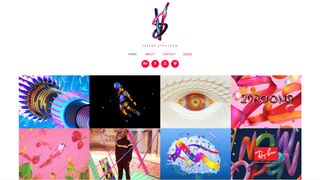
Sure, you’ve got a portfolio website. But have you optimised it to promote your skills and win new work? You have around seven seconds to catch a visitor's attention before they leave your website, so it’s important to give people what they want, fast.
Make sure your portfolio is easy to navigate, with clear categories so that prospective clients or employers can quickly find what they’re looking for. You’ll also need a snappy About page that explains who you are, what you do, and how to get in touch.
Most importantly, only show your best work. And remember that clients commission what they see, so if you’re looking to win more branding, web design or illustrative work, for example, make sure you showcase work in that field. (Don’t have any yet? Self-initiated work is fine – just make sure it’s clearly labelled.)
Of course, there’s no point having a stunning portfolio if the work never changes. Give visitors a reason to come back by making time to add new projects regularly.
Get the Creative Bloq Newsletter
Daily design news, reviews, how-tos and more, as picked by the editors.
02. Shout about it
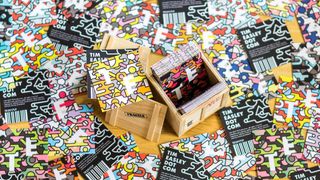
So you’ve put some serious effort into your portfolio: you make time every month to update it and you’re pleased with the work inside. Then you need to make sure potential clients, employers and collaborators see it.
Include your website URL on your business cards, printed promotional materials, email signature and social media accounts.
Do you host your work on any other portfolio or creative showcase sites, such as Behance or Dribbble? If so, add a clear portfolio link. Make sure your entire online presence and any promotional print material point people back to your website.
03. Make savvy use of social media

With over two billion active users worldwide, social media should be a crucial part of your content strategy: after all, there’s no point publishing projects on your portfolio site if you don’t tell people they’re there.
It’s impossible to invest time in every platform, though, so work out where your audience is, choose two or three primary channels and become an expert in each.
The best way to build your social profile is to post frequently. Update your status, ask and answer questions, request permission to join like-minded groups such as the brilliant Designers League on Facebook, and generally get stuck in.
What’s the best way to share your work without annoying people? One best-practice technique comes from content marketing platform Rallyverse, which analysed customer data in a wide range of industries to find an optimal ratio: 30 per cent your own original content (so your work and ideas), 60 per cent other people’s content (links to relevant opinion or resources that your audience will find valuable), and 10 per cent purely promotional (featuring a call-to-action).
But think outside the box, too. You can also share Dropbox files on Twitter, for example, so why not upload a PDF portfolio?
04. Create stunning project images
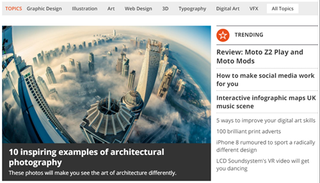
When it comes to self-promotion, one of the best things you can do is create striking, high-quality imagery to showcase your projects in the best possible light. Not only will this keep your portfolio website looking sharp, it makes your work more shareable – and we’re not just talking about on social media.
The design press is always looking for exciting new projects to showcase. Make their job easier by creating high-res images and well-lit photography that’s screaming out to be published in a creative magazine or on a leading design website.
05. Get featured by the design press
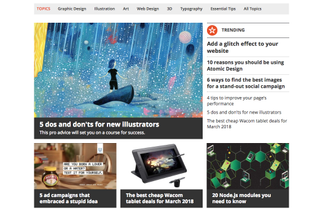
Of course, it’s one thing to be discovered by the design press – but what can you do to increase your chances of being featured by a global design blog or publication?
Journalists receive dozens of emails every day. If you want to get your work in the design press – and onto the radar of creative directors, commissioning editors and studio heads around the world – you need to cut through the noise. Here's how:
- Do your research
Journalists can tell if you’ve never been on their site in the first sentence. Never start your email with ‘Dear Sir/Madam’ – seek out an appropriate contributor instead. - Know your angle
Find out what stories a blog or publication covers, and angle your email appropriately. There’s no point sending straight news to a tips-based website, or a motion project to a typography showcase site. Find the right blog and the right angle. - Keep your email short and concise
Get to the point. You know who you’re talking to, so explain why they'll find your work interesting, who you are, and where to find more information. - Don't clog the recipient's email with huge images
Attach two or three low-res project JPEGs, and include a download link for high-res images and a URL taking people to the work to see more. - Never harass people
Don’t bombard blogs with every single project you do, and if you don’t get an answer, don’t aggressively pester publications – you’ll be blacklisted quickly. - Do follow up pleasantly
Don't be disheartened if you don’t get an answer first time, though. Journalists are busy and don’t always see the first email. A polite follow-up might just get you noticed.
06. Enter relevant award schemes

When it comes to effective self-promotion, winning an award can put you on the creative map, generating precious column inches in print and online, and making Twitter explode overnight.
But it’s important to only apply for awards that matter the most to you, your practice and your client base – and to read the entry criteria thoroughly before starting. When's the deadline? How should the work be submitted? Is there an entry fee?
If you win, consider the promotional potential of your award. Blog about it, tweet it and include it in your newsletter – and don’t forget to add ‘award-winning’ to the About section on your website.
There’s another advantage to awards, too. If you consider every project an opportunity to win one – no matter how small the client or brief – and go the extra mile, your portfolio (not to mention client) will quickly thank you.
Remember: great work is always noticed, eventually. If you’re looking to project your work onto the global design stage and get it in front of the right people, everything starts with first-rate creative that goes beyond the brief.
Step up your self-promotion by heading over to digital print and design company moo.com. You’ll find a wealth of fun, affordable, easy-to-use tools for creating premium business cards and stunning self-promotional material that will project you onto the global design stage, and get your work in front of the people who count.
Related articles:

Thank you for reading 5 articles this month* Join now for unlimited access
Enjoy your first month for just £1 / $1 / €1
*Read 5 free articles per month without a subscription

Join now for unlimited access
Try first month for just £1 / $1 / €1

Julia is editor-in-chief, retail at Future Ltd, where she works in e-commerce across a number of consumer lifestyle brands. A former editor of design website Creative Bloq, she’s also worked on a variety of print titles, and was part of the team that launched consumer tech website TechRadar. She's been writing about art, design and technology for over 15 years.




